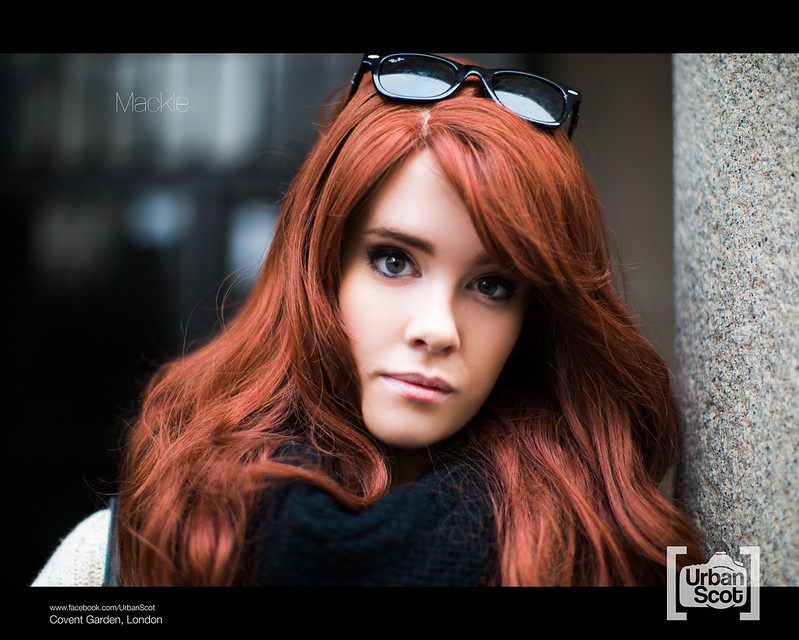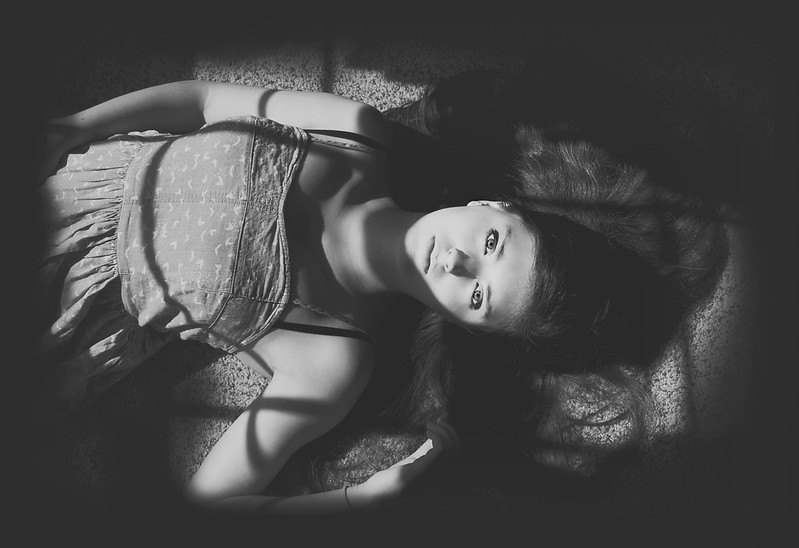Free Photography Bundle ($180 value): PS actions, LR presets, photo overlays, & print templates!
Get it here.
Kristina by Daniel Zedda
Of course, shooting with speedlights is a blast and oftentimes necessary to perfect a certain type of photograph, but there’s something about shooting with natural light that just gives portraits a natural, soft feel. The way the warm light from the sun sometimes canvasses a face, making it, too, glow. Or, the way a sharp ray of light bursting through a window into a darkened room creates a dramatic portrait, the look of natural light is classic and unmistakable.
Natural light can also be a photographer’s best friend. If you know what you’re working with and all the ways you can manipulate it, natural light can be one of the most useful tools to harness and best of all, you don’t have to spend money on it, or lug it around in your camera bag. Working with and understanding natural light is a chore every photographer should task themselves with, regardless of what style of photography they wish to engage in.
5 Tips To Take Better Portraits Using Natural Light
1. The Time Of Day
There are certain times of day in which it’s better, or at least easier, to shoot outside using the sun as your source of light. If the sun is directly overhead, there’s usually potential for harsh shadowing in your portraits. This typically shows up as unsightly dark shadows below the eyes. Avoid shooting around noon. Instead, opt to shoot during early morning or late evening hours when the sun’s angle creates a more mellow, golden light. Also keep in mind that overcast days may not look very appealing on the surface, those pesky clouds are actually serving as a giant sheet of diffusion material. Think of the clouds as a softbox for the sun.
Get the Portrait Power Lightroom Presets for easily processing your portraits
2. Embrace Open Shade
Ever notice how often you see models posing in front of a wall when they are having their portraits taken outside? There’s a number of reasons they may be standing there, including composition, but oftentimes a photographer will have placed them there to take advantage of “open shade”. Open shade, such as the expanse of shade thrown off by a structure is almost essential to getting well lit portraits when shooting when the sun is just too bright and too overhead. Having your model pose facing the light in open shade will give your portraits a softer, more even, higher quality light. It will also help eliminate those pesky under eye shadows mentioned above.
Mackie by Peter McConnochie
3. Use a Reflector
Reflectors should really be an essential part of every photographers arsenal whether they shoot natural light or never leave the studio. They are perfect for fine tuning your lighting style, reflecting light into a specific direction, and even changing the color temperature of the reflected light. What’s more is they fold up into easy to carry pouches, they barely weigh anything, and are inexpensive to buy. You can even use items you may already own such as white t-shirts, curtains, paper, etc. When you’re shooting in natural light, simply bringing in a reflector to bounce a little light onto the subject’s face. It will serve as a fill light and assist in balancing out the light and shadow.
4. Get Dramatic
Don’t forget to look for the light, ever. Being aware of the different kinds of light we see in nature is what sets apart great photographers from the not-so-great. Always make a conscious effort to look for and at the way the sunlight falls on things. Look for dramatic light that breaks it’s way into the shadows, boldly announcing it’s presence. These dramatic rays of light are the perfect touch when making moody or powerful portraits. For example, try placing your subject in front of a window on a bright day in a darkened room.
5. If You Can’t Beat It, Join It
There will be times, of course when the sun will seem to be just unbearable and difficult to work with. This is when you really need to kick your creativity into overdrive and start brainstorming some ideas with ways to incorporate it into your portraits. Nothing is impossible. Rather than accept defeat, look for ways to frame the sun, or move yourself around until it’s behind your subject to create a silhouette.
Getting It Right
Window Light by Rachel Adams
Don’t expect yourself to perfect the art of natural light in one session. Understanding light is a process that takes a very long time. Patience is key. You may want to consider taking notes to reference at later dates, as you are bound to run into a great number of different lighting situations throughout your experiments. After your shoot is over and you are reviewing your photos on your computer, just add a quick memo to the collection noting the weather conditions. And, as usual, don’t be afraid to experiment with your ideas and try new things!




